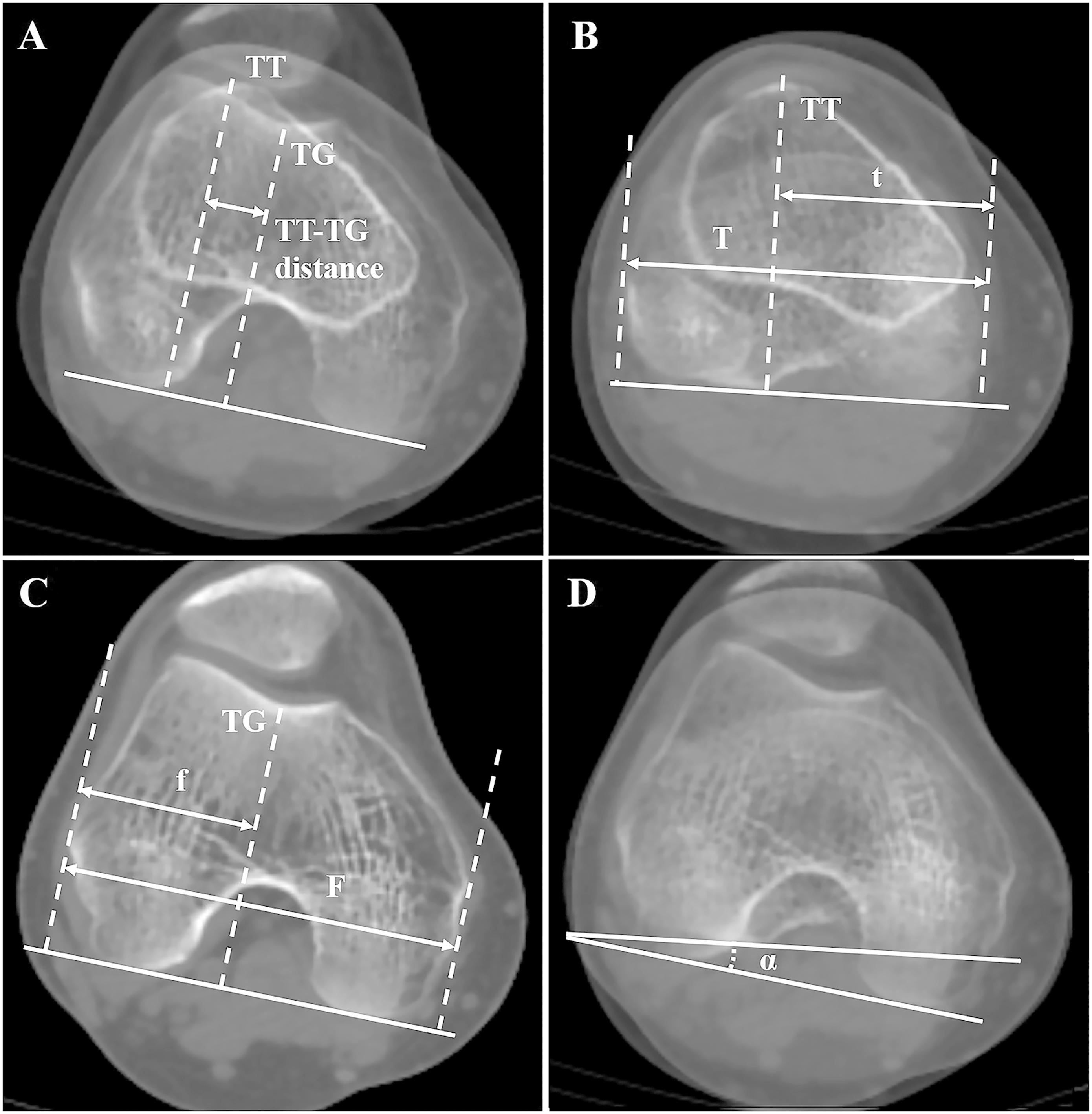Patellar instability continues to be a focus of research, and there are numerous factors that potentially contribute to recurrent episodes of instability and functional loss. The tibial tuberosity-trochlear groove (TT-TG) distance has been studied at length, with series showing that excessive TT-TG distance can lead to recurrent instability, prompting many surgeons to perform tibial tubercle medialization procedures in addition to soft-tissue medial patellofemoral ligament (MPFL) reconstructions. But is an increase in the TT-TG distance driven by lateralization of the tibial tubercle? To what extent does medialization of the trochlear groove also contribute to an increased TT-TG distance?
In the current issue of JBJS, Chen et al. report on their study in China in which they measured the TT-TG distance and its components with the knee in extension, assessed their diagnostic performance in distinguishing between patients with and without episodic patellar dislocation, and investigated the relationship of each component to the TT-TG distance.
Included were 541 knees in 305 patients (predominately female) with episodic patellar dislocation and 240 knees in 216 control patients (predominately male) with no history of patellofemoral instability; all patients were from the Chinese Han population. The TT-TG distance, tibial tubercle lateralization, trochlear groove medialization, and knee rotation between the distal femur and proximal tibia were measured on axial CT images. The group with instability was further analyzed according to the amount of trochlear dysplasia based on the Dejour classification (subgroups A through D).
The authors found that all parameters measured were significantly greater in the episodic instability group compared to the control group. In particular, the mean TT-TG distance was greater for the instability group, at 18.2 mm vs. 13.0 mm in the control group. The TT-TG distance had the best diagnostic performance, with the area under the receiver operating characteristic curve being significantly better than that for the other parameters. The cutoff value for the TT-TG distance was 16.2 mm, with 69.9% sensitivity and 82.9% specificity.
They also found that the TT-TG distance was moderately to strongly correlated to knee rotation and trochlear groove medialization in both groups, but tibial tubercle lateralization was weakly correlated to the TT-TG distance in the control group and only moderately correlated in the instability group. Furthermore, knees with type-D trochlear dysplasia had a significantly greater TT-TG distance than those with type A, C, or C. The TT-TG distance increased progressively from type A to type D.
The authors concluded that TT-TG distance, a predictor of patellar instability, was affected more by knee rotation and medialization of the trochlear groove than by tibial tubercle lateralization. Although much further work needs to be done to translate the findings to a larger surgical treatment algorithm, this study may give insight into parameters that drive recurrent patellar instability, even after “normalizing” the TT-TG distance with medialization of the tibial tubercle via osteotomy.
Matthew R. Schmitz, MD
JBJS Deputy Editor for Social Media
A JBJS Video Summary of this study is available here.



